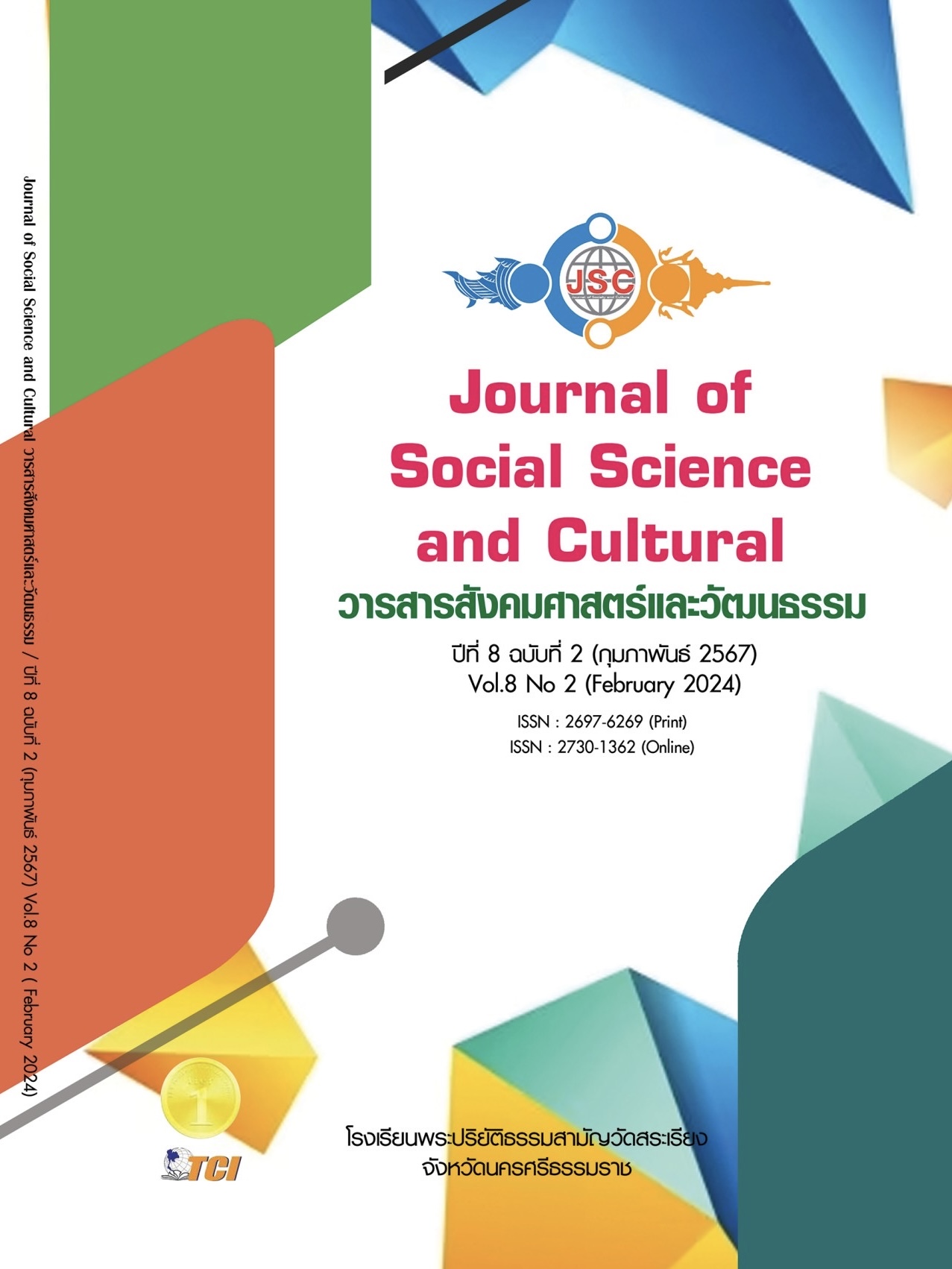SUPPLY CHAIN COST MANAGEMENT OF THE COMMUNITY ENTERPRISE PRODUCT GROUP PHIPUN DISTRICT NAKHON SI THAMMARAT PROVINCE
Main Article Content
Abstract
This research aims to 1) analyze the supply chain costs of the community enterprise’s products 2) to study the problems and obstacles of the community enterprise’s products 3) to suggest the guidelines for supply chain operations of the community enterprise. The research collected quantitative and qualitative from the data sources. The data were further analyzed and presented in percentages, averages and descriptions in order to understand the model for managing problems, obstacles, supply chain costs through the analysis of supply chain costs. The results showed that the supply chain cost management of three community enterprises including: 1) rubber hats, logistics costs from main activities was 39.21 percent and supporting activities was 13.3 percent. Direct raw materials accounted for 44.71 percent, indirect raw material costs were one percent, and consumable items constituted 0.25 percent of the total cost; 2) Tie-dye fabric had logistics costs of 9.20 percent from support activities, 39.50 percent from core activities, 13.50 percent from consumable items, 10.25 percent from indirect raw material costs, 24.38 percent from direct labor costs and 100 percent of direct raw materials and 3) Banana chip production has logistics costs of 13.9 percent from support activities, 64.1 percent from core activities, no consumable item costs, 19.06 percent from indirect raw material costs, 61.14 percent from direct labor costs, and 16.3 percent from direct material costs. Comparing the costs of all three community enterprises, it has been demonstrated that in the processing of raw materials into finished products, the majority of the processing costs are in direct labor costs combined with direct material costs, and there are logistics costs both directly and indirectly. This underscores the need for urgent improvements in labor utilization and market strategies for the community enterprise.
Article Details
References
กนกวรรณ กิ่งผดุง และสุจินต์ วุฒิชัยวัฒน์. (2560). การประยุกต์ต้นทุนฐานกิจกรรมใช้กับกระบวนการผลิตนมพาสเจอร์ไรซ์ กรณีศึกษาในโรงงานอุตสาหกรรมนมขนาดเล็ก. Veridian E-Journal, Silpakorn University ฉบับภาษาไทย สาขามนุษยศาสตร์สังคมศาสตร์ และศิลปะ, 10(1), 1661-1679.
กรมส่งเสริมการเกษตร. (2564). แผนพัฒนาการเกษตร ในช่วงแผนพัฒนาเศรษฐกิจและ สังคมแห่งชาติฉบับที่ 13 (พ.ศ.2566 - 2567). สำนักงานเศรษฐกิจการเกษตร. เรียกใช้เมื่อ 15 กันยายน 2564 จาก https:// infocenter.doae.go.th/wp-content/uploads/2018/06/
ฐิติพร ฐิติจำเริญพร. (2565). การบริหารต้นทุนการผลิตเพื่อพัฒนาศักยภาพ กลุ่มวิสาหกิจทอผ้าชุมชนแม่คือ อำเภอดอยสะเก็ด และชุมชนต้นเปา อำเภอสันกำแพง จังหวัดเชียงใหม่. วารสารบัณฑิตศึกษา ปริทรรศน์. มหาวิทยาลัยจุฬาลงกรณราชวิทยาลัยวิทยาเขตแพร่, 8(2), 260-272.
พัชรินทร์ สุภาพันธ์. (2560). การจัดการห่วงโซ่อุปทานด้วยตัวแบบ SCOR ของผักสดที่ผ่านมาตรฐานการรับรองตามการผลิตทางการเกษตรดีที่เหมาะสมในจังหวัดเชียงใหม่. เรียกใช้เมื่อ 25 ตุลาคม 2566 จาก https://opacdb02.dpu.ac.th/cgi-bin/koha/opac-detail.pl?biblionumber=176569
ภาวินีย์ ธนาอนวัช. (2563). การบริหารต้นทุนการผลิตและการวางแผนกําไรผลิตภัณฑ์ของกลุ่มวิสาหกิจชุมชน ตําบลบางนางร้า อําเภอบางปะหัน จังหวัดพระนครศรีอยุธยา เพื่อยกระดับเศรษฐกิจชุมชน. วารสารวิชาการมหาวิทยาลัยราชภัฏกาญจนบุรี, 9(1), 47-56.
วัชรพจน์ ทรัพย์สงวนบุญ และคณะ. (2563). การเปลี่ยนผ่านทางดิจิทัลเพื่อยกระดับความสามารถทางการแข่งขันองค์กร กรณีศึกษาธุรกิจอาหารและเครื่องดื่ม. วารสารเกษตรศาสตร์ธุรกิจประยุกต์, 14(20), 25-44.
สำนักงานสภาพัฒนาการเศรษฐกิจและสังคมแห่งชาติ สำนักนายกรัฐมนตรี. (2565). แผนพัฒนาเศรษฐกิจและสังคมแห่งชาติ ฉบับที่ 13 (พ.ศ. 2566 - 2570). เรียกใช้เมื่อ 30 พฤษภาคม 2566 จาก https://www.nesdc.go.th/ewt_news.php?nid=13651
อุทัย ปริญญาสุทธินันท์. (2560). วิสาหกิจเพื่อสังคม: การต่อยดวิสาหกิจชุชนและสวัสดิการชุมชนเพื่อการจัดการชุมชนทุ่งตำเสา. วารสารการพัฒนาชุมชนและคุณภาพชีวิต, 5(2), 353-364.
Kumar, N. & Mahto, D. G. (2013). Assembly Line Balancing: A Review of Developments and Trends in Approach to Industrial Application. Global Journal of Researches in Engineering Industrial Engineering, 13(2), 28-50.
Lambert et al. (2016). Social support's relationship to correctional staff job stress, job involvement, job satisfaction, and organizational commitment. The Social Science Journal, 53(1), 22-32.

